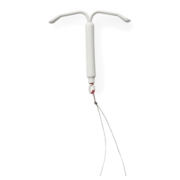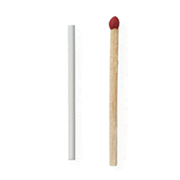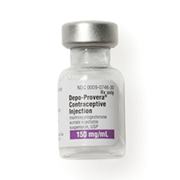Birth control for breastfeeding moms
Just had a baby? Congrats and good luck! Now, what birth control are you using?

Now that your bundle of joy has come, it’s time to snuggle up with that new-baby smell and settle into being a mom. Between that and dealing with the effects of sleep deprivation—going to the grocery store in pajamas, falling into bed right after dinner, and drooling in public—you’ve got enough to worry about without stressing about birth control. Unfortunately, as some celebrities may have learned the hard way, it’s possible to get pregnant again really soon after having a baby.
A break is definitely the best thing for your body right after a pregnancy, but if you’re not exclusively breastfeeding in a very particular way, you can ovulate (or release an egg) as soon as three weeks after birth. So what’s a new mom to do? For starters, I’d recommend looking into the IUD, the implant, or the shot for birth control. All three of these methods are low-maintenance, effective, safe for new moms, and totally fine to use while breastfeeding.
The IUD: A new mom’s best friend
Although you may think of your nursing pillow as your new best friend, consider adding an IUD (intrauterine device) to the list. There are currently four IUDs available in the U.S.: the 5-year low-dose hormone Mirena, the 12-year, hormone-free Paragard copper IUD, the 3-year low-dose hormone Skyla, and the newest IUD, Liletta, which is a lot like Mirena. These IUDs are nearly as effective as getting your tubes tied, but you can get pregnant again as soon as they are removed. An IUD can be placed immediately after you deliver (even in the delivery room!) or at your post-partum check-up.
The implant: Four years of freedom
The contraceptive implant (Nexplanon, previously Implanon) is another nice option. The tiny 1½ inch rod is inserted just under the skin in your upper arm by your doctor and keeps you 99.95% protected against pregnancy for four years. It can also be put in before you even leave the hospital or at your post-partum check-up.
The shot: After giving birth, shots may seem like no big deal
For some women, the idea of something inside their arm or uterus is just not appealing. The three-month contraceptive shot (Depo-Provera) could be a good compromise. It provides highly effective protection against pregnancy as long as you get your shot on time every three months. One more factor to note; the shot is the only birth control method that causes some women to gain weight, so if losing your pregnancy pounds is on your mind, this may not be the best option.
But I’ve only ever taken the pill…
Even if you’re already comfortable using the pill, patch, or ring, they’re not the best choice right after birth. Combined hormonal contraceptives (with estrogen and progestin) put you at slightly higher risk for blood clots within your blood vessels. The two months after giving birth are also a time when women are naturally at higher risk of having a blood clot. Putting the two together is too much risk. So, if you are really committed to using the pill, patch or ring, you have two choices:
1) You can wait until your post-partum check-up about six weeks after birth to start using the pill, patch, or ring. That means using a condom or other method if you have sex before your check-up.
2) You can take a progestin-only pill, a.k.a. the mini-pill, starting right after birth. The mini-pill doesn’t affect breastfeeding. Mini-pills don’t have estrogen, which is the ingredient that causes increased risk of blood clots for other combined hormonal contraceptives. However, mini-pills have to be taken at the same time every day to be effective. With a new baby around, remembering to do anything at the same time every day is about as likely as getting a good night’s sleep!
There are lots of great options. Talk to your nurse or doctor to find a method that will work well for you as a new mom.
How do you feel about this article?

Heat up your weekends with our best sex tips and so much more.


